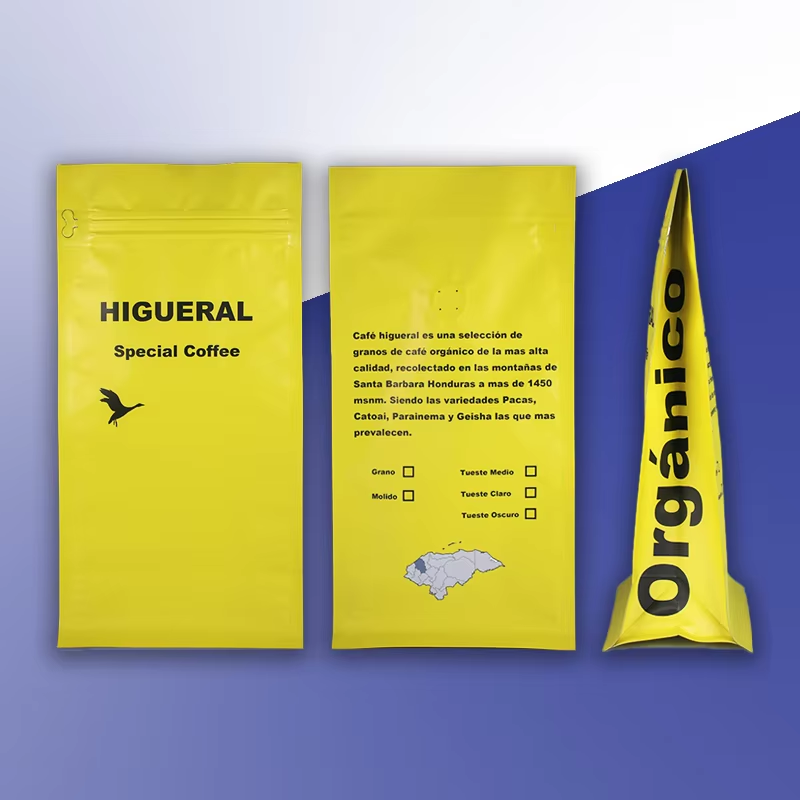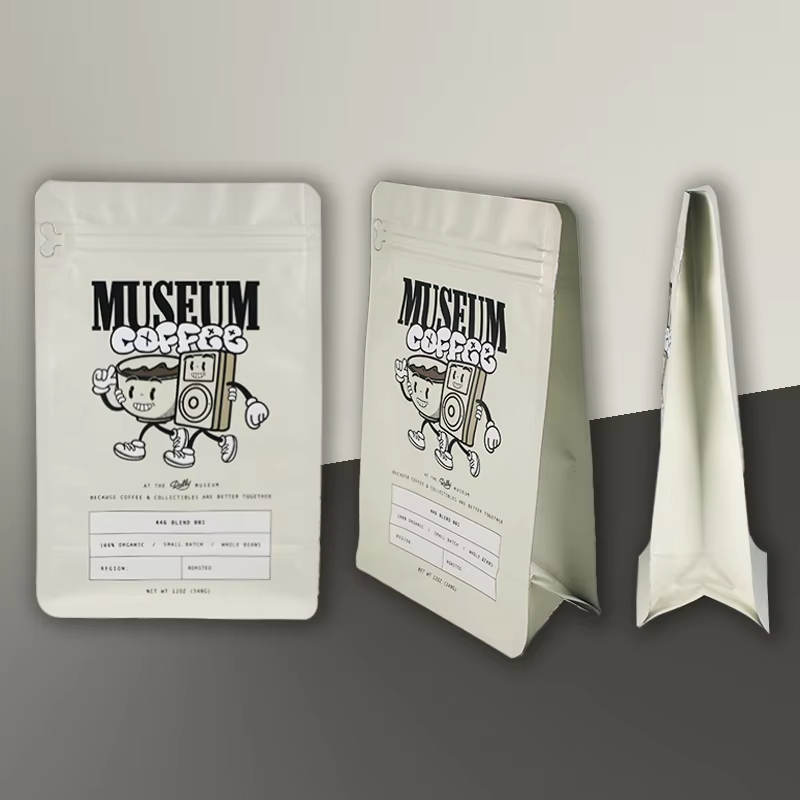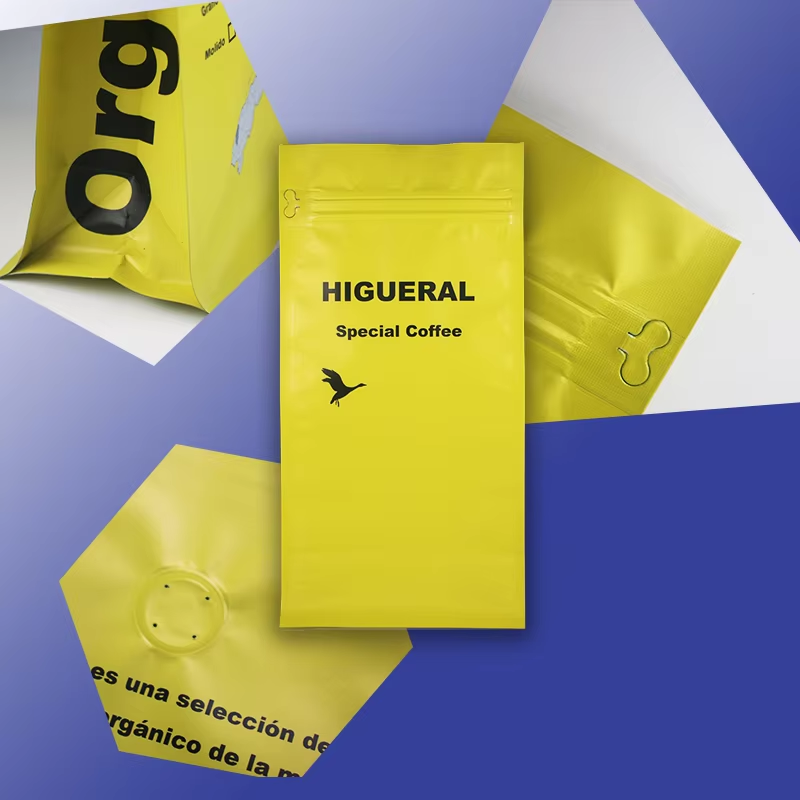**How Much Coffee is in a Bag: Understanding Coffee Packaging and Serving Sizes**
Coffee, the beloved beverage of millions around the world, comes in a variety of packaging sizes to suit different needs and preferences. Whether you're a casual drinker or a coffee connoisseur, understanding how much coffee is in a bag is essential for managing your consumption, planning your purchases, and ensuring you have enough to last until your next shopping trip. In this article, we'll explore the common sizes of coffee bags, how to measure coffee, and provide some practical tips on choosing the right size for your needs.


**Common Coffee Bag Sizes**
Coffee is typically sold in pre-packaged bags that come in several standard sizes. The most common sizes include:
- **8 ounces (oz) / 227 grams (g):** This is a smaller bag, often chosen by those who want to sample new flavors or don't consume coffee as frequently.
- **12 oz / 340 g:** A popular size for many coffee drinkers, offering a good balance between freshness and quantity.
- **16 oz / 454 g (1 pound):** This is a standard full-pound bag, which is a common purchase for households with multiple coffee drinkers or for those who prefer to buy in bulk.
- **2 pounds (lbs) / 32 oz / 907 g:** For serious coffee lovers or offices, a 2-pound bag can be a cost-effective option.
- **5 lbs / 2.27 kg and above:** These larger quantities are often found in commercial settings, such as cafes, restaurants, or for those who really love their coffee and want to stock up.
**Understanding Coffee Measurements**
When it comes to brewing coffee, the amount of coffee you use per cup can vary based on personal preference, but there are general guidelines that can help you estimate how much coffee you need.
- **Scoop-to-Cup Ratio:** A common recommendation is to use about 1 to 2 tablespoons (tbsp) of ground coffee for every 6 ounces (oz) of water. This can be adjusted to taste, but it serves as a good starting point.
- **Weight-Based Measurement:** Some coffee enthusiasts prefer to measure their coffee by weight, using a digital scale. A typical ratio is 1 gram of coffee to 15-18 milliliters (ml) of water, which translates to roughly 17-20 grams of coffee for an 8-ounce cup.
**Calculating the Number of Cups from a Bag of Coffee**
To determine how many cups of coffee you can get from a bag, you need to consider the size of the bag and the amount of coffee you use per cup. Here's a simple way to calculate it:
- **For 8 oz (227 g) Bag:**
- If you use 1 tablespoon per 6-oz cup, you can get approximately 16 cups.
- If you use 2 tablespoons per 6-oz cup, you can get about 8 cups.
- **For 12 oz (340 g) Bag:**
- 1 tablespoon per 6-oz cup yields about 24 cups.
- 2 tablespoons per 6-oz cup yields about 12 cups.
- **For 16 oz (454 g) Bag:**
- 1 tablespoon per 6-oz cup yields about 32 cups.
- 2 tablespoons per 6-oz cup yields about 16 cups.
- **For 2 lb (32 oz / 907 g) Bag:**
- 1 tablespoon per 6-oz cup yields about 64 cups.
- 2 tablespoons per 6-oz cup yields about 32 cups.
- **For 5 lb (2.27 kg) Bag:**
- 1 tablespoon per 6-oz cup yields about 160 cups.
- 2 tablespoons per 6-oz cup yields about 80 cups.
**Factors Affecting the Amount of Coffee in a Cup**
- **Brewing Method:** Different brewing methods may require different amounts of coffee. For example, espresso uses a finer grind and a higher concentration of coffee, while French press might use a coarser grind and a slightly higher ratio of coffee to water.
- **Strength Preference:** Some people prefer stronger coffee, which means using more coffee per cup, while others enjoy a milder brew.
- **Cup Size:** The actual size of your "cup" can vary. A traditional coffee cup is 6 ounces, but many modern mugs hold 12 ounces or more.
**Choosing the Right Size for Your Needs**
- **Frequency of Consumption:** Consider how often you drink coffee. If you're a daily drinker, a 12-ounce or 16-ounce bag might be suitable. If you drink less frequently, an 8-ounce bag could be enough.
- **Household Size:** Larger households or shared living spaces may benefit from buying in larger quantities, like 2-pound bags, to reduce the frequency of purchases.
- **Freshness:** Coffee is best when it's fresh. Buying in smaller quantities and more frequently can help ensure that you always have fresh coffee on hand.
- **Storage Space:** If you have limited storage space, smaller bags might be more practical. Conversely, if you have ample storage, buying in bulk can be convenient and economical.
**Tips for Maximizing Your Coffee Bag**
- **Grind Freshly:** Grinding your coffee just before brewing helps to preserve its flavor and aroma.
- **Store Properly:** Keep your coffee in an airtight container away from light, heat, and moisture to maintain its freshness.
- **Use Quality Water:** The quality of the water you use can significantly impact the taste of your coffee. Use filtered or spring water if possible.
- **Experiment with Ratios:** Don't be afraid to adjust the coffee-to-water ratio to find what tastes best to you. Personal preference plays a big role in enjoying your coffee.
- **Consider Sustainability:** When purchasing coffee, look for brands that support sustainable and ethical practices, such as fair trade and organic certifications.
**Conclusion**
Knowing how much coffee is in a bag and how many cups you can make from it is a fundamental part of being a coffee drinker. By understanding the different bag sizes, measuring methods, and factors that influence the amount of coffee per cup, you can better plan your coffee purchases and brewing. Whether you're looking for the perfect morning cup or aiming to share a pot with friends, having the right amount of coffee on hand ensures that you can always enjoy a delicious and satisfying brew. So, the next time you pick up a bag of coffee, you'll be well-informed and ready to savor every sip.
 EN
EN
 AR
AR
 HR
HR
 CS
CS
 DA
DA
 NL
NL
 FI
FI
 FR
FR
 DE
DE
 EL
EL
 IT
IT
 JA
JA
 KO
KO
 NO
NO
 PL
PL
 PT
PT
 RO
RO
 RU
RU
 ES
ES
 SV
SV
 TL
TL
 IW
IW
 ID
ID
 LV
LV
 LT
LT
 SR
SR
 SK
SK
 SL
SL
 UK
UK
 SQ
SQ
 ET
ET
 TH
TH
 TR
TR
 FA
FA
 AF
AF
 MK
MK
 UR
UR
 BN
BN





